This oriole stands out as one of the rare species among orioles, displaying a distinctive yellow back and featuring a striking two-color scheme.
Meet the Yellow-backed Oriel:
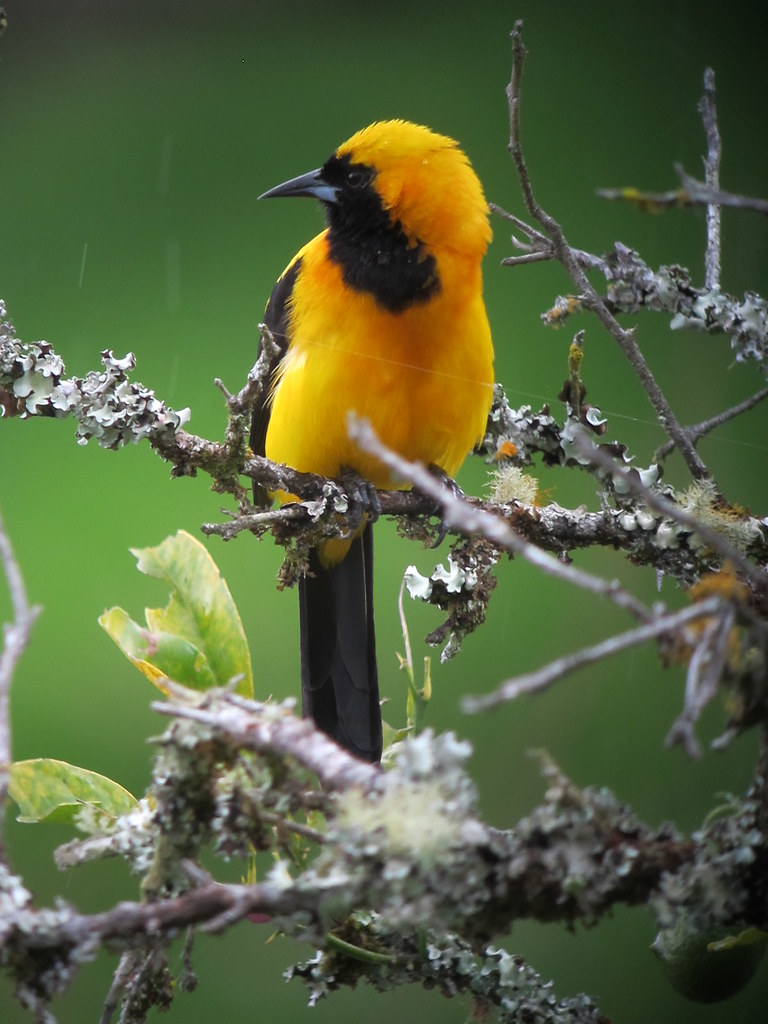
“Icterus chrysater / Turpial montañero / Yellow-backed Oriole” by felixú is licensed under CC BY-SA 2.0.
Description: Yellow-backed orioles (Icterus chrysater), a sexually monomorphic species, have an average length of 21.5 cm (8.5 in) from beak to tail, making them a medium-sized oriole species. Their exposed skin and claws are bluish-black, while adult males sport contrasting yellow and black plumage. The wings, tail, shoulders, throat, and face are black, while the back and underparts shine in bright yellow.
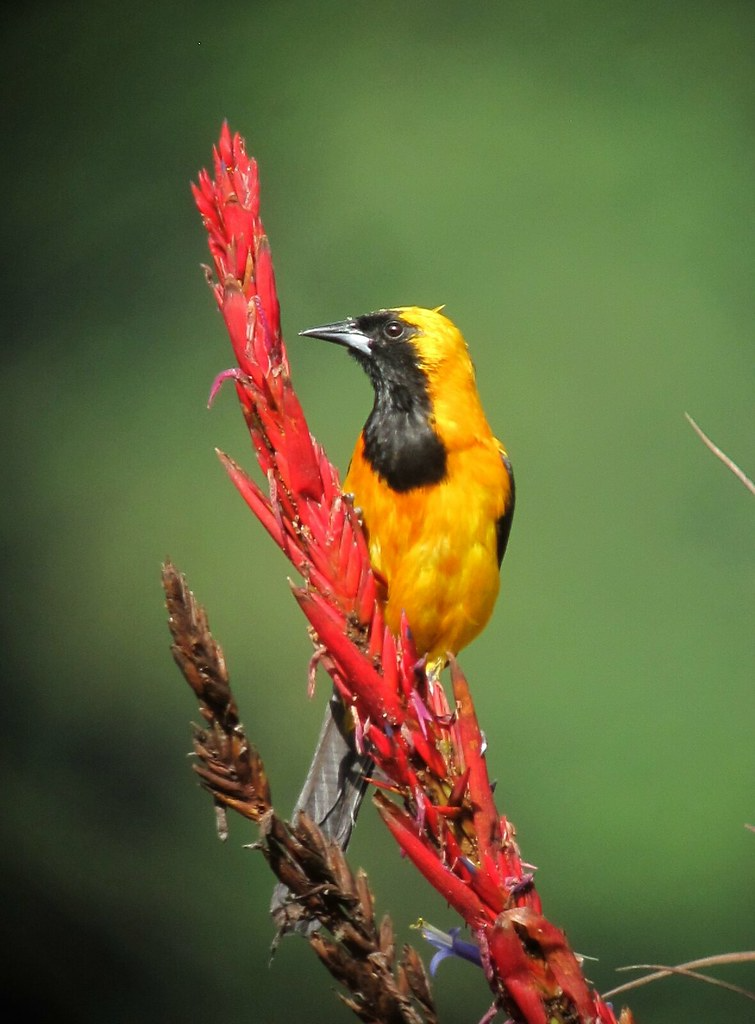
“Icterus chrysater / Turpial montañero / Yellow-backed Oriole” by felixú is licensed under CC BY-SA 2.0.
Adult females closely resemble males but with a slightly greenish hue in the yellow areas. Distinguishing sexes in the field is challenging.
Immature yellow-backed orioles resemble adult females but are greener overall, and their flight feathers are dark brown instead of black. They can be easily distinguished from adult females by their olive eye-line.
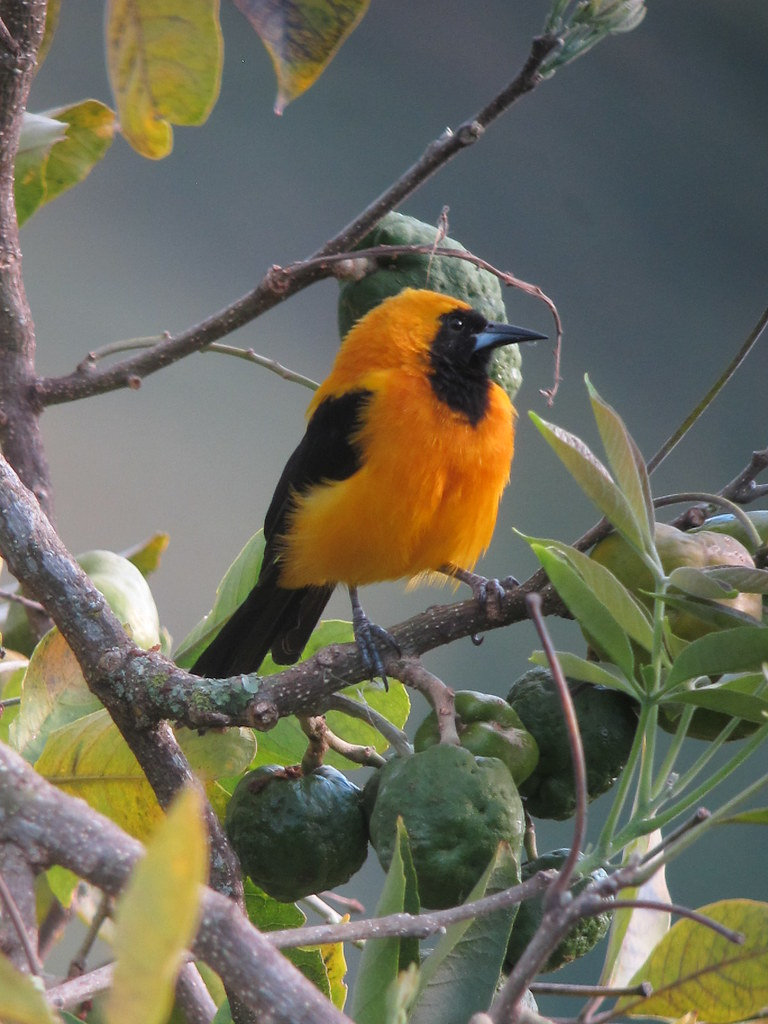
“Icterus chrysater / Turpial montañero / Yellow-backed Oriole” by felixú is licensed under CC BY-SA 2.0.
Distribution and Habitat: Yellow-backed orioles inhabit Central America and northern South America, with three allopatric populations. One population, known as the subspecies I. c. giraudii, resides in southern C all entral America, including Nicaragua, Panama, and Colombia. The northernmost populations consist of subspecies I. c. chrysater and I. c. mayanensis, found in northern Central America and southern Mexico. These orioles are located in Belize, Colombia, El Salvador, Guatemala, Honduras, Mexico, Nicaragua, Panama, and Venezuela.
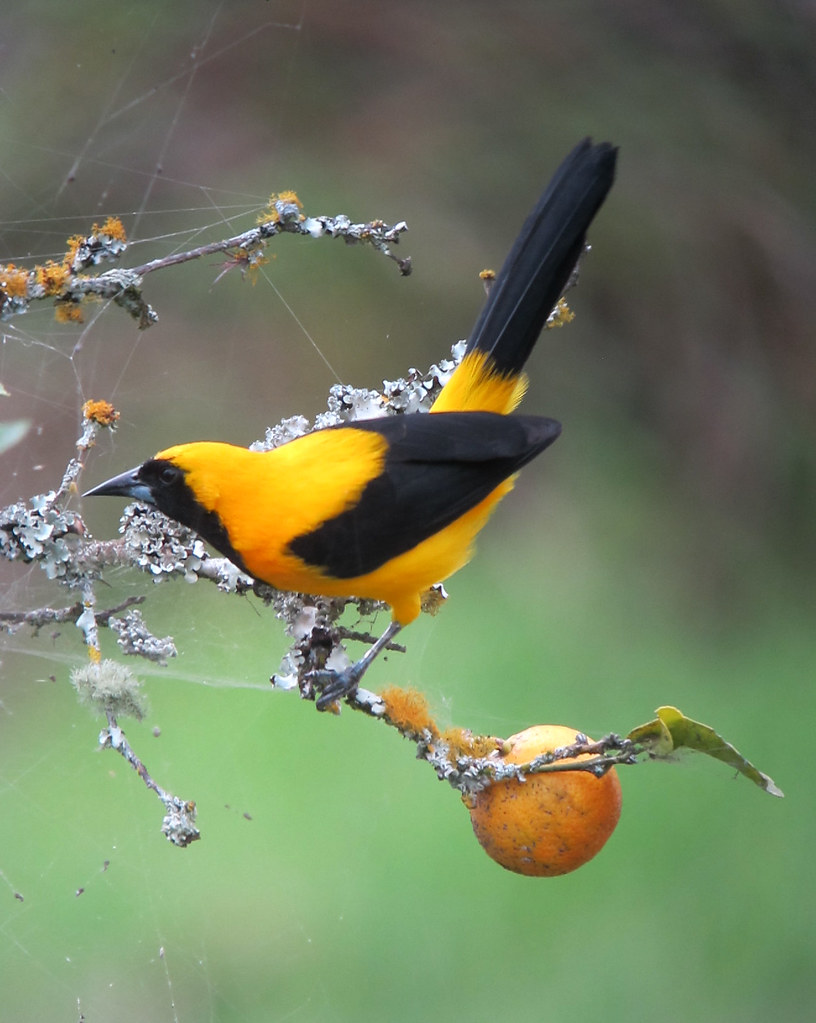
“Icterus chrysater / Turpial montañero / Yellow-backed Oriole” by felixú is licensed under CC BY-SA 2.0.
While they can adapt to various habitats, they prefer open mixed pine-oak woodlands and dry scrub forests. Yellow-backed orioles have also been spotted in banana plantations and occasionally colonize lowland deciduous forests. Their altitude range typically stays below 900 m (3,000 ft), but in Central and South America, they can be found at elevations exceeding 1,000 m (3,300 ft). The highest observed altitude for these populations in the wild is around 3,000 m (9,800 ft).
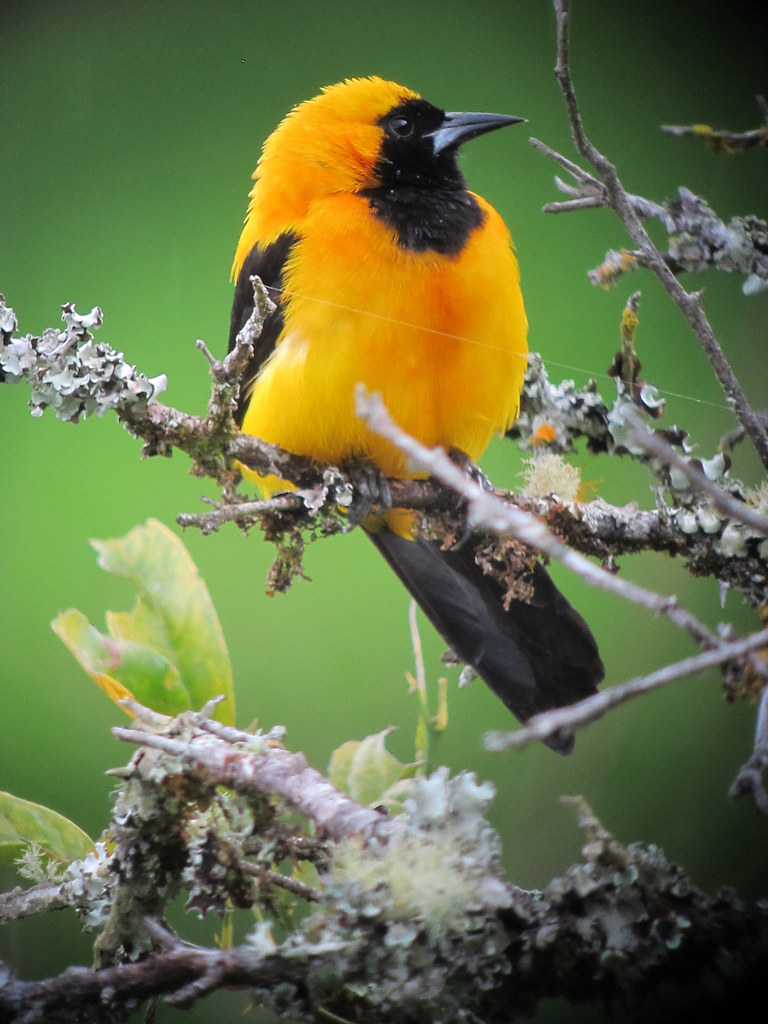
“Icterus chrysater / Turpial montañero / Yellow-backed Oriole” by felixú is licensed under CC BY-SA 2.0.
Food Habits Diet: Yellow-backed orioles are insectivorous, primarily consuming caterpillars, wasps, ants, weevils, and other arthropods. They supplement their diet with bananas and occasionally feed on nectar from balsa and Heliconia. When foraging, they often hunt in family units or pairs, probing tree bark or epiphyte leaves for insects. While foraging for nectar, they sometimes engage in “nectar robbing” by puncturing unopened flowers to access the nectar.
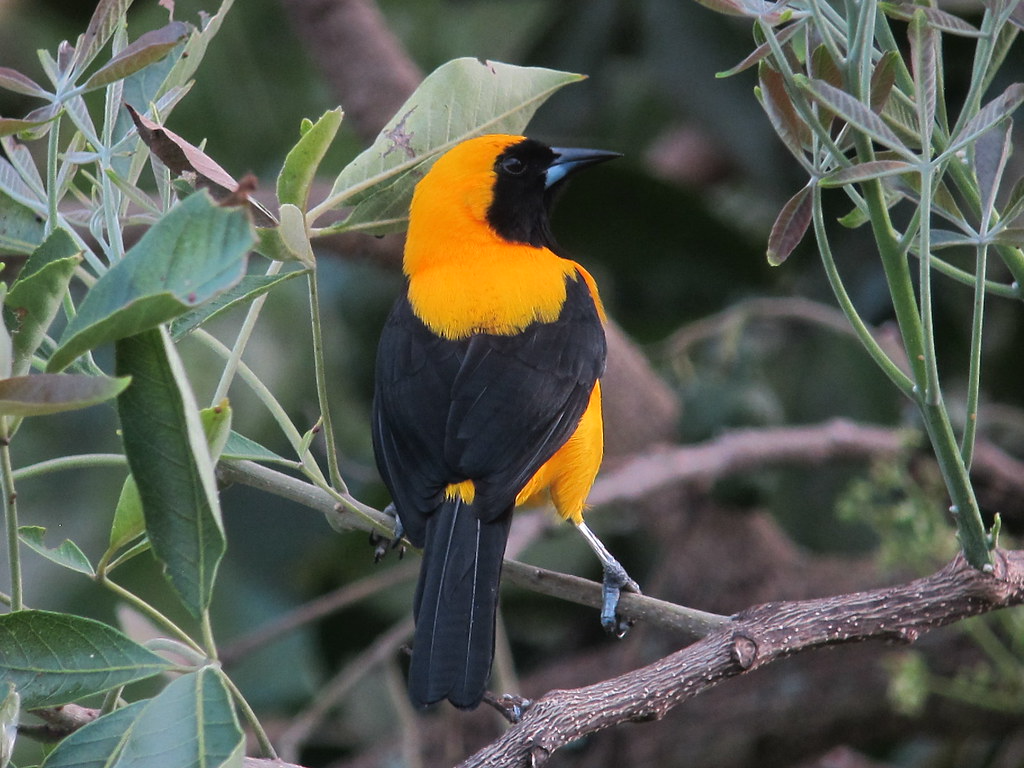
“Icterus chrysater / Turpial montañero / Yellow-backed Oriole” by felixú is licensed under CC BY-SA 2.0.
Similar species include the South American yellow oriole (Icterus nigrogularis).
Reproduction: Yellow-backed orioles are monogamous, breeding once a year with a single mate. Their nests are shallow, dangling baskets, usually hanging from the tips of palm fronds. Constructed from fine grasses, the nests have a springy texture. Typically, these nests are situated in the canopy of mature trees, at least 7 m (23 ft) high. The eggs are whitish with purple scrawlings concentrated near the broad end, often marked with evenly distributed brown lines.

“Icterus chrysater / Turpial montañero / Yellow-backed Oriole” by felixú is licensed under CC BY-SA 2.0.
Communication: Yellow-backed orioles have a clear, whistling song resembling that of Spot-breasted orioles. It consists of a series of clear notes, occasionally adopting a warbled quality among populations in southern Central America. Both males and females are known to sing, a common trait among orioles breeding in tropical climates. They deliver vocalizations from high perches in trees, with the primary call described as a “nasal ‘chert’,” along with a “whistling chatter” and a “nasal alarm.”
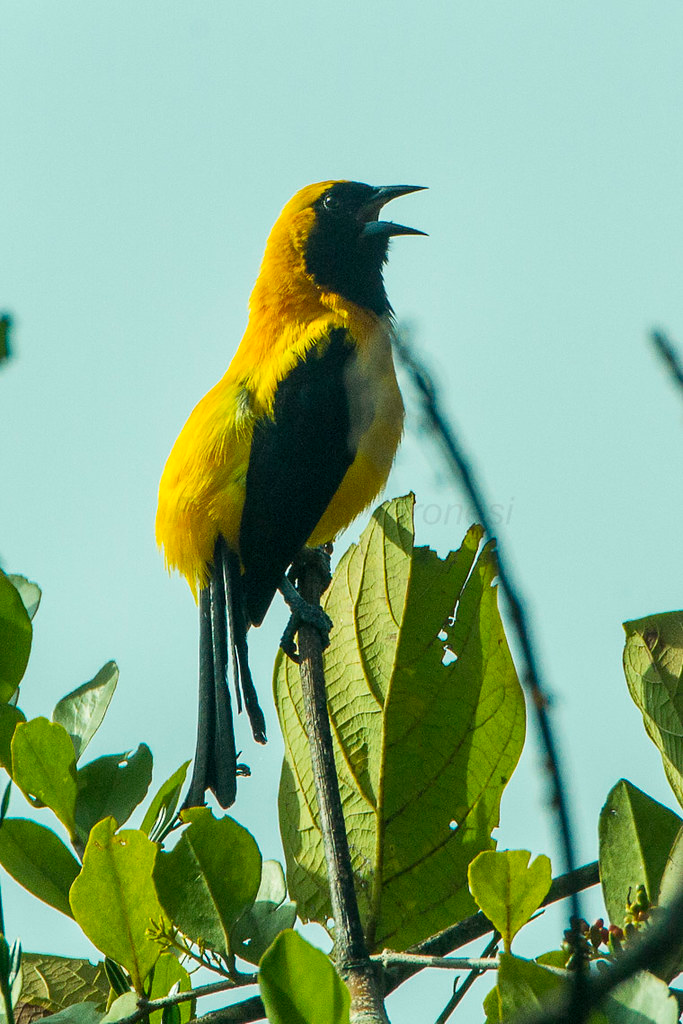
“Icterus chrysater / Turpial montañero / Yellow-backed Oriole” by felixú is licensed under CC BY-SA 2.0.
Regarding conservation status, this bird is currently classified as Least Concern by the IUCN.
Listen to this bird next:




